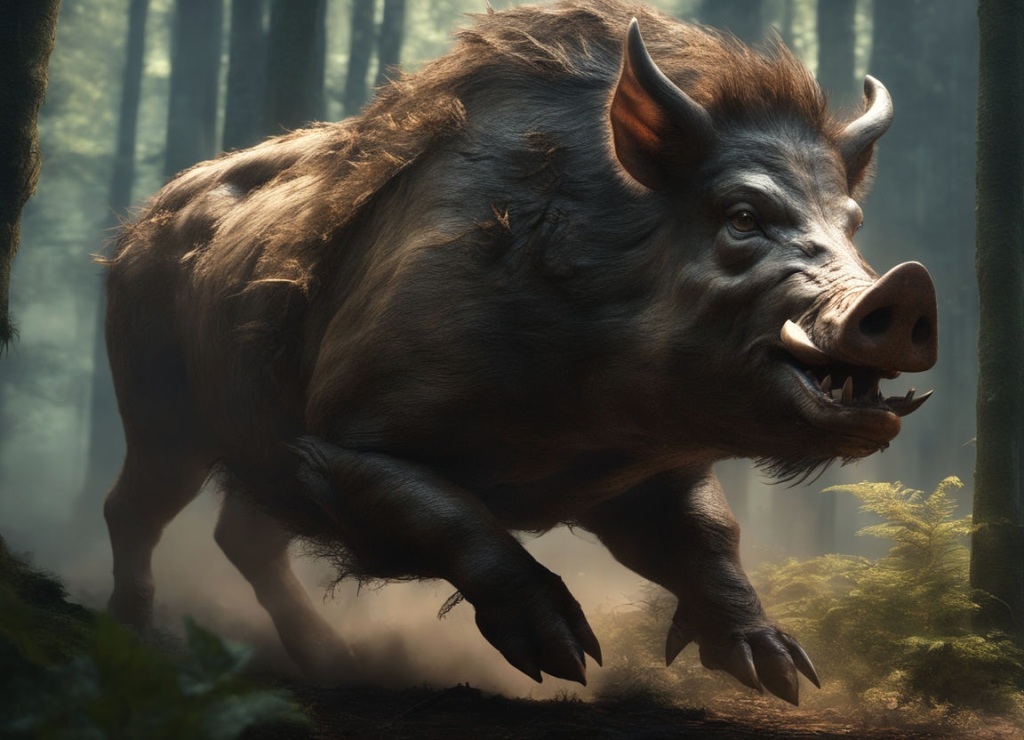Warthog
| Species | swine (boar) |
| No. Appearing | 5–20 |
| Behaviour | subsocial (sounder) |
| Range | desert, rural, savanna, steppe, veldt |
| Size | 28 in. at shoulder |
| Weight | 230 lbs. |
| Intelligence | 2 |
| Armour Class | 6 |
| Hit Dice | 3 |
| Action Points | 5 |
| Max. Stride | 19 |
| THAC0 | 19 |
| Hp/Die | d8 |
| Attack Forms | 2: tusk |
| Damage | tusk (2–8) |
| Special Attacks | aggression |
Warthogs are robust and sturdy creatures known for their distinctive appearance, featuring warty protrusions on their faces from which comes their name. In tribal villages and rural communities that share their habitat with warthogs, such are viewed with a mixture of caution and necessity.
Contents
The warthog possesses two distinct sets of tusks: one upper and one lower. As the warthog matures, the lower set, through the repetitive motion of the warthog's mouth opening and closing, gradually becomes razor sharp. These lower tusks, which can grow to 10 inches in length, are sought after in various regions for their value as a form of low-grade ivory, making them a prized material for various cultural and practical uses.
Behaviour
Warthogs raid crops or dig up root vegetables, threatening a community's livelihood. Aggressive and dangerous when not approached with care, hunting warthogs for food and protection of crops is nevertheless an integral part of many community's survival in tropical and sub-tropical regions. The meat from a successfully hunted warthog can provide sustenance for multiple families.
During the mating season, the wet season, male warthogs engage in competitive interactions as they vie for the attention of sows. Once a male has secured a mate, he remains close throughout the gestation period, which spans up to six months. During this time, finding two warthogs together is a common occurrence.
In the remaining part of the year, the "sounder," or group, comprises a close-knit assembly of 3 to 4 adult females encircled by a cohort of 4 to 16 juvenile warthogs. Meanwhile, a separate male group forms comprising 2 to 8 adults, who establish their presence within a quarter-mile radius of the female group. They are safest to hunt during the dry season, when water sources become scarce, and they are forced to venture out of their dens.
Advantages
The warthog's physical build, with their sturdy legs and powerful muscles, contributes to their ability to run at high speeds. More normally, however, they move at stride-3 and no better in combat.
Aggression. Due to their volatile nature, warthogs receive a +2 bonus to hit when attacking.
See Bestiary
